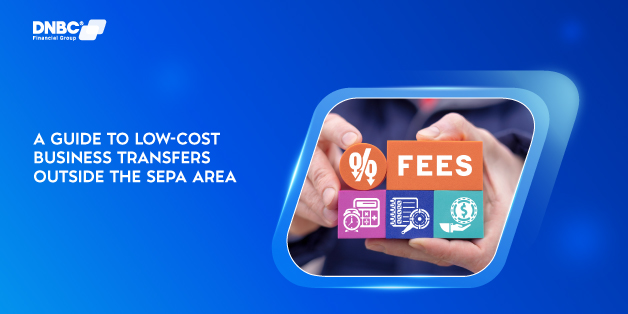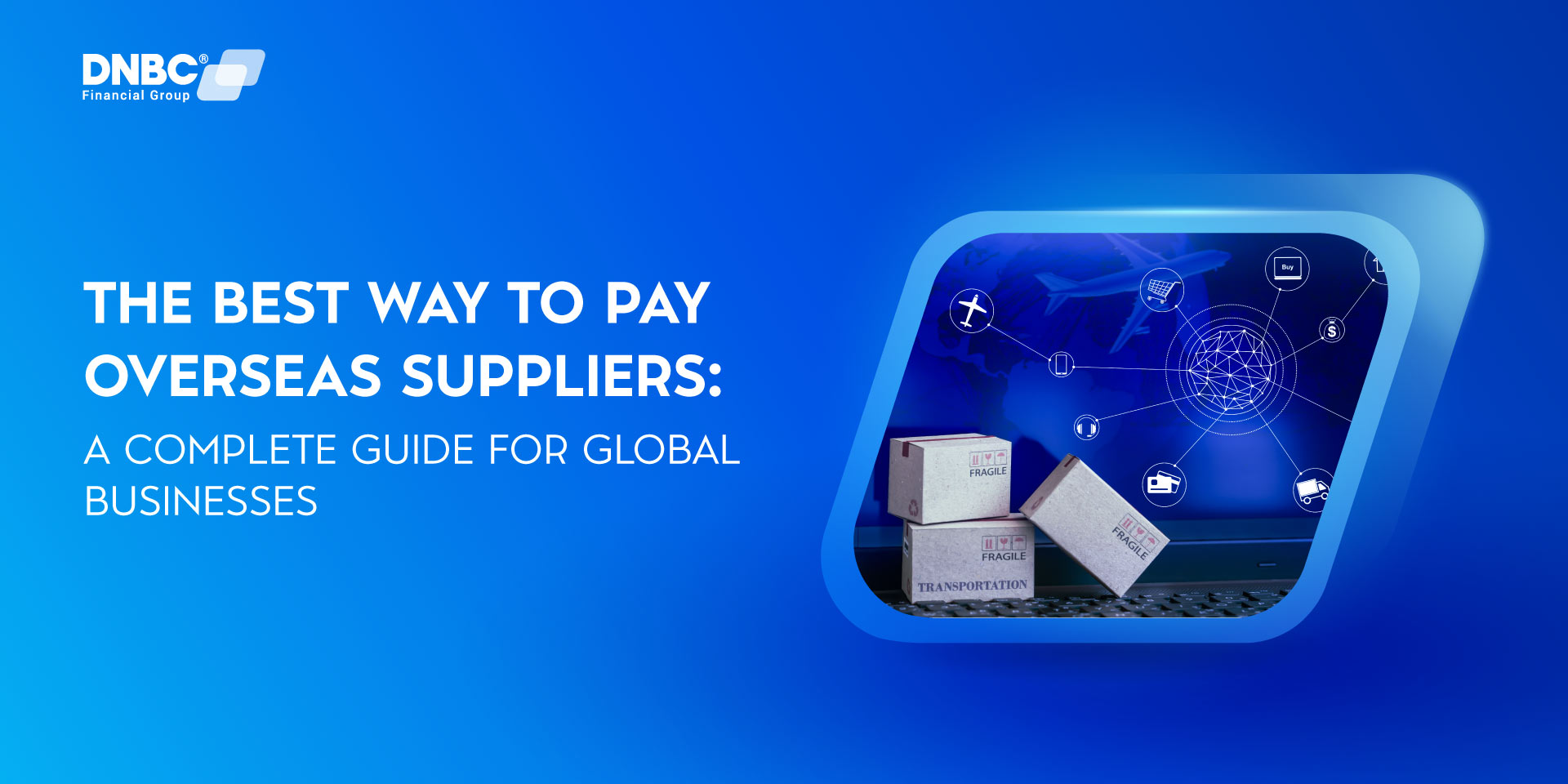- Home
- Blog
- Business Finance
- Mitigating Currency Conversion Risk in International Business
Mitigating Currency Conversion Risk in International Business
Business Finance
25 September 2024
DNBC Team
This article is a part of DNBCGroup Blog Center
Contact DNBCGroup for the technology news, tips, trends, and updates.
Currency exchange risk is a frequent challenge faced by businesses involved in import-export trade. Fluctuating exchange rates can threaten these companies' financial stability, profitability, and even survival.
In this guide, we'll explore the different types of currency risk, their underlying causes, and practical strategies to mitigate their impact. Our goal is to equip businesses with the knowledge to effectively manage global payment risks, reduce international payment charges, and protect their bottom line.
What is currency exchange risk in import-export trade?
Currency exchange risk, or foreign exchange (FX) risk, occurs when exchange rate fluctuations between two currencies impact an import-export business’s financial transactions.
This risk arises when a business has accounts payable or receivable in a foreign currency. Any change in exchange rates can lead to financial losses or gains.

For instance, when a contract requires payment in a foreign currency, changes in the exchange rate can impact the cost of goods or services. This might affect the company's profit margins.
Types of Currency Exchange Risks
- Transaction Risk: Occurs when the value of a company's cash flows is affected by changes in exchange rates between the time a deal is made and the time the payment is actually received or paid. This risk directly impacts profitability, due to potential increases in overseas transaction fees and other costs.
- Translation Risk: Affects multinational companies that consolidate financial statements in a home currency but have subsidiaries abroad. When these foreign subsidiaries’ assets and liabilities are converted to the home currency, the exchange rate changes can result in gains or losses.
- Economic Risk: Also known as operating exposure, this occurs when currency fluctuations affect a company’s market value or its competitive position in the market. For example, a weaker currency could make a country’s exports more competitive internationally. On the other hand, a stronger currency might reduce the competitiveness of a company’s exports.
Causes of Exchange Rate Fluctuations
Interest Rate Differentials
Interest rate differences between countries significantly impact their currency exchange rates. Higher interest rates attract foreign capital, increasing demand and strengthening the currency. Conversely, lower interest rates can weaken the currency as investors seek better returns elsewhere.

For example, if the US Federal Reserve raises interest rates while the European Central Bank keeps rates low, investors might move their capital to the US This increases demand for US dollars, causing the dollar to appreciate against the euro.
Inflation Rates
Inflation refers to the rate at which the general price level of goods and services rises over time. High inflation erodes a country's purchasing power, weakening its currency. Countries with low inflation rates tend to have stronger currencies due to stable or increasing purchasing power.
For example, if inflation in the UK is higher than in the US, the British pound may depreciate against the US dollar over time. This is because rising prices in the UK reduce the pound’s purchasing power compared to the dollar.
Political Instability and Economic Uncertainty
These factors significantly influence a country’s currency strength. Political uncertainty, such as government changes, social unrest, or economic crises, makes a currency appear riskier and less stable. During such times, investors often move their capital to safer markets. This reduces demand for the unstable country’s currency and causes it to depreciate.
For example, in 2016, the UK’s vote to leave the European Union (Brexit) created political uncertainty about future trade relations, causing the British pound to fall sharply against other currencies. Investors’ concerns about Brexit’s economic impacts led to a drop in confidence in the pound.
Market Sentiment and Speculation
Market sentiment refers to the overall attitude of investors toward a particular currency. Speculation is when traders buy or sell currencies based on anticipated movements in exchange rates. Economic news, geopolitical events, or market trends often drive these movements.
Investors and traders predict currency performance by assessing economic conditions and trends. If they expect a currency to appreciate, they buy more of it, increasing its value. Conversely, if they expect it to weaken, they sell it off, causing depreciation.
Speculative trading can result in short-term fluctuations in exchange rates. Large-scale buying or selling by investors can cause sharp fluctuations, even if economic fundamentals remain unchanged.

For example, if speculators believe the Japanese yen will weaken due to an upcoming economic report indicating slower growth, they might sell large amounts of yen. This increased selling can cause the yen to depreciate rapidly, even before the report is released.
Impact on Importers and Exporters
- Importers: If the local currency weakens after placing an order, the cost of the imported goods will rise when converted back to the local currency. This reduces profit margins or increases the cost of goods for end customers.
- Exporters: If the local currency strengthens, the exported goods become more expensive for foreign buyers, potentially reducing demand. Conversely, if the local currency weakens, exported goods become cheaper and more attractive, but the company might receive less value when converting foreign currency revenue back to its home currency.
Currency Exchange Risk Example
ABC Textiles, a US-based company, imports fabric from a supplier in Europe. The supplier invoices ABC Textiles €100,000, and payment is due in three months. At the time the invoice is issued, the exchange rate is 1.10 USD/EUR, meaning the cost in US dollars is $110,000.
However, since the payment is due in three months, ABC Textiles is exposed to currency exchange risk. If the euro strengthens against the dollar during this period, the company will end up paying more in dollars when it's time to settle the invoice.
Scenario 1: Adverse Currency MovementLet’s assume that by the time the payment is due, the exchange rate has shifted to 1.15 USD/EUR. Now, ABC Textiles must convert dollars to euros at this new rate, meaning they will pay $115,000 instead of $110,000. This $5,000 increase in cost is purely due to currency exchange rate fluctuations and represents the currency exchange risk that businesses face in international trade.
Scenario 2: Favorable Currency MovementAlternatively, if the exchange rate moves to 1.05 USD/EUR, ABC Textiles would only need to pay $105,000 to cover the €100,000 invoice. In this case, the business benefits from the currency movement, paying $5,000 less than expected.
Strategies to Mitigate Currency Exchange Risk in Import-Export Trade
Forward Contracts
A forward contract is an agreement to exchange a specific amount of currency at a predetermined exchange rate on a set future date. By locking in the exchange rate for a future transaction, businesses can eliminate uncertainty about what the future rate will be. This ensures that importers or exporters know exactly how much they will pay or receive in their home currency.

For example, a US importer agrees to pay €100,000 in six months. If the current exchange rate is 1.10 USD/EUR, they could use a forward contract to lock in that rate. This guarantees they'll pay $110,000, regardless of market fluctuations during that period.
- Advantage: It offers full protection against unfavorable currency movements.
- Drawback: If the exchange rate moves in the business’s favor, they cannot benefit from it—they are locked into the forward rate.
Currency Options
Currency options give a company the right, but not the obligation, to exchange a specific amount of currency at a predetermined rate on or before a future date. The business pays a premium for this option. If the exchange rate moves against them, they can use the option to exchange at the agreed-upon rate. If the rate moves in their favor, they can let the option expire and take advantage of the market rate.
For example, a UK exporter expects to receive $500,000 in three months. They buy an option to sell dollars at £0.75/$1, but if the rate improves to £0.80/$1 by the time of the transaction, they can let the option lapse and exchange at the better rate.
- Advantage: It provides flexibility, allowing the business to hedge against unfavorable movements while benefiting from favorable ones.
- Drawback: Options come with a cost (the premium), which can make them more expensive than other hedging methods.
Natural Hedging
Natural hedging involves structuring business operations to naturally offset currency risks without the need for financial contracts. A company balances its foreign currency exposure by matching inflows and outflows in the same currency. This reduces the need to convert currencies frequently, minimizing exposure to exchange rate fluctuations.
For example, a US company that exports to Europe might also source raw materials from Europe, ensuring that both revenues and expenses are in euros. This reduces the need to convert euros into dollars.
- Advantage: It’s a low-cost approach since no financial instruments are required.
- Drawback: It can be difficult to achieve perfect matching of currency flows, and it may not be feasible for all businesses, especially if they have concentrated exposure to a single currency.
Multi-Currency Accounts
A multi-currency account allows businesses to hold and manage different currencies in one place. Instead of converting foreign currency payments to local currency immediately, companies can keep the funds in the original currency and wait for a better exchange rate. This is especially useful for businesses that frequently deal with multiple currencies.

For example, a Canadian exporter with a multi-currency account receives payments in USD but can hold the dollars in their account until the exchange rate with the Canadian dollar improves.
- Advantage: It provides flexibility in timing currency exchanges to capitalize on favorable market movements.
- Drawback: It requires actively monitoring the market and making decisions on when to convert the funds, which can add complexity to cash management.
Leading and Lagging
They refer to adjusting the timing of payments to take advantage of expected currency movements.
Leading involves accelerating payments when a currency is expected to weaken, helping the company avoid higher costs in the future. Conversely, lagging entails delaying payments when a currency is expected to strengthen, allowing the company to pay less when the payment is eventually made.
For example, if a US company expects the euro to strengthen, they might delay paying a European supplier to benefit from the potential decrease in the dollar cost of the payment.
- Advantage: It provides a simple way to manage currency risk without the need for financial instruments.
- Drawback: Leading and lagging can strain relationships with trading partners who might prefer payments on the original terms, and it requires accurate forecasting of currency movements, which can be difficult.
Netting
Netting is a technique used by multinational companies to offset currency exposures between subsidiaries in different countries. Instead of each subsidiary making individual currency transactions, the company aggregates and offsets payments and receipts, reducing the overall need for currency conversions.
For example, a company with subsidiaries in the UK and Japan might net their intra-company payments, so only the net difference in currency needs to be exchanged, minimizing transaction costs.
- Advantage: Reduces the number of currency transactions and the associated fees.
- Drawback: It is typically only feasible for large multinational corporations with numerous foreign subsidiaries.
Hedging with Futures Contracts
A futures contract is an agreement to buy or sell a currency at a specified price on a future date. Similar to a forward contract, it helps businesses hedge against currency fluctuations. However, futures contracts are standardized and traded on exchanges, which means they offer less flexibility compared to forward contracts.

For example, a business that needs to pay for imports in three months might buy a futures contract that locks in the current exchange rate for the time of the payment.
- Advantage: Futures contracts are highly liquid and can be traded on exchanges, making them transparent and accessible.
- Drawback: They are less flexible than forwards because of their standardized nature, meaning they may not perfectly match the business’s exposure in terms of amount or timing.
Cross-Currency Swaps
A cross-currency swap is a financial agreement where two parties exchange principal and interest payments in different currencies for a specified period. This arrangement allows companies to convert a loan or other liabilities from one currency to another, effectively hedging against currency risk
For example, a US company with a loan in euros can swap it into dollars, paying in dollars while the counterparty pays in euros.
- Advantage: Swaps offer long-term protection and can be tailored to specific cash flow needs.
- Drawback: Swaps can be complex and typically involve large transactions, making them more suitable for bigger businesses.
Use of AI and Algorithmic Solutions
Modern fintech tools offer AI-powered platforms that analyze market trends, forecast currency movements, and automatically trigger hedging strategies. Businesses can integrate these platforms to automate currency risk management, receiving real-time alerts or automated executions of hedging instruments (e.g., forwards, options).

For example, a global company could use AI tools to automatically purchase currency options when the market moves beyond a specific threshold, ensuring risk is managed continuously.
- Advantage: It reduces the manual effort involved in monitoring currency markets and can offer better timing on trades.
- Drawback: Costs can be high, and businesses need to ensure the technology is robust and reliable for their specific needs.
How DNBC Supports Import-Export Companies in Managing Currency Exchange Risks
As a trusted partner for global money transfers, DNBC offers a suite of solutions designed to help businesses manage currency exchange risks effectively.

1-on-1 Support: Dedicated Relationship Managers
Our dedicated Relationship Managers provide personalized guidance 24/7, assisting you in timing currency conversions and navigating complex situations.
Wide Global Reach: Transfers to 170 Countries
With access to over 170 countries and territories, DNBC provides a robust global payment network that facilitates efficient transactions with international suppliers and buyers.
Enhanced Security: Advanced Protection
DNBC’s security framework ensures secure financial transactions, preventing fraud and minimizing business disruptions, allowing importers and exporters to focus on their core activities.
Transparent Pricing: No Hidden Fees
DNBC’s transparent pricing helps businesses avoid unexpected international payment charges, enables accurate budgeting for overseas transaction fees, crucial for companies operating on thin margins and needing precise cash flow forecasts.
Simple Procedures: Fast Account Opening and Hassle-Free Transfers
DNBC simplifies account setup and money transfers, helping businesses avoid late payments and penalties, maintaining strong relationships with overseas partners.
Regulatory Compliance: Meeting International Standards
DNBC adheres to global regulatory standards, helping businesses avoid legal issues and penalties related to non-compliance, allowing them to focus on expanding their global trade operations.
By leveraging DNBC’s expertise and services, businesses can navigate the complexities of international trade with greater confidence and stability.
Your Trusted Partner
In your Digital
Journey
Free 1 - on -1 support
Free account opening fees
No hidden fees
Note: The content in this article is for general informative purposes only. You should conduct your own research or ask for specialist advice before making any financial decisions. All information in this article is current as of the date of publication, and DNBC Financial Group reserves the right to modify, add, or remove any information. We don’t provide any express or implied representations, warranties, or guarantees regarding the accuracy, completeness, or currency of the content within this publication.
Related posts

A Guide to Low-Cost Business Transfers Outside the SEPA Area
04 July 2025

How to Set Up a Business Escrow Account: A Simple Guide
20 June 2025

Cross-Border Business: Opportunities and Challenges in the Global Marketplace
23 May 2025

The Best Way to Pay Overseas Suppliers: A Complete Guide for Global Businesses
22 May 2025

Real Time Cross Border Payments: Shaping the Future of Global Financial Transactions
22 May 2025